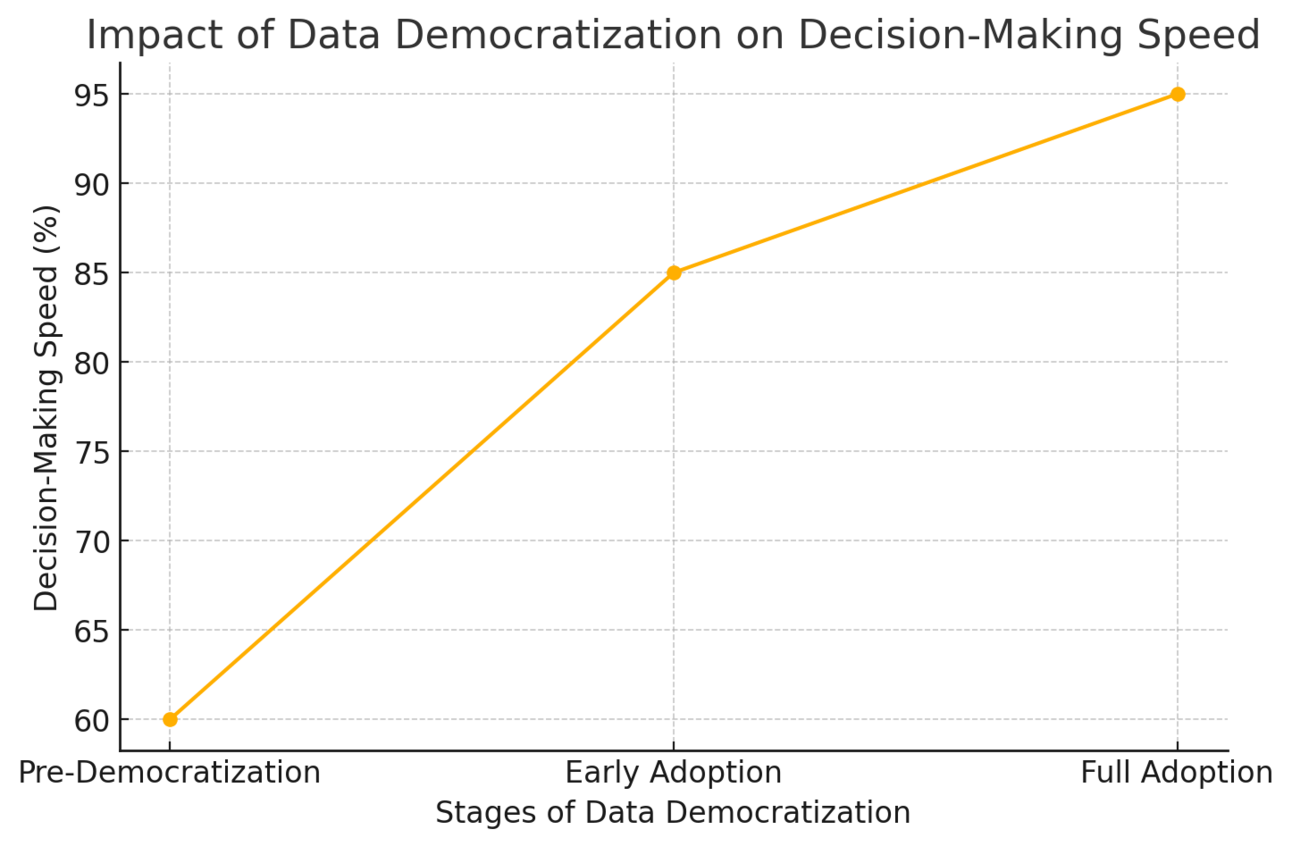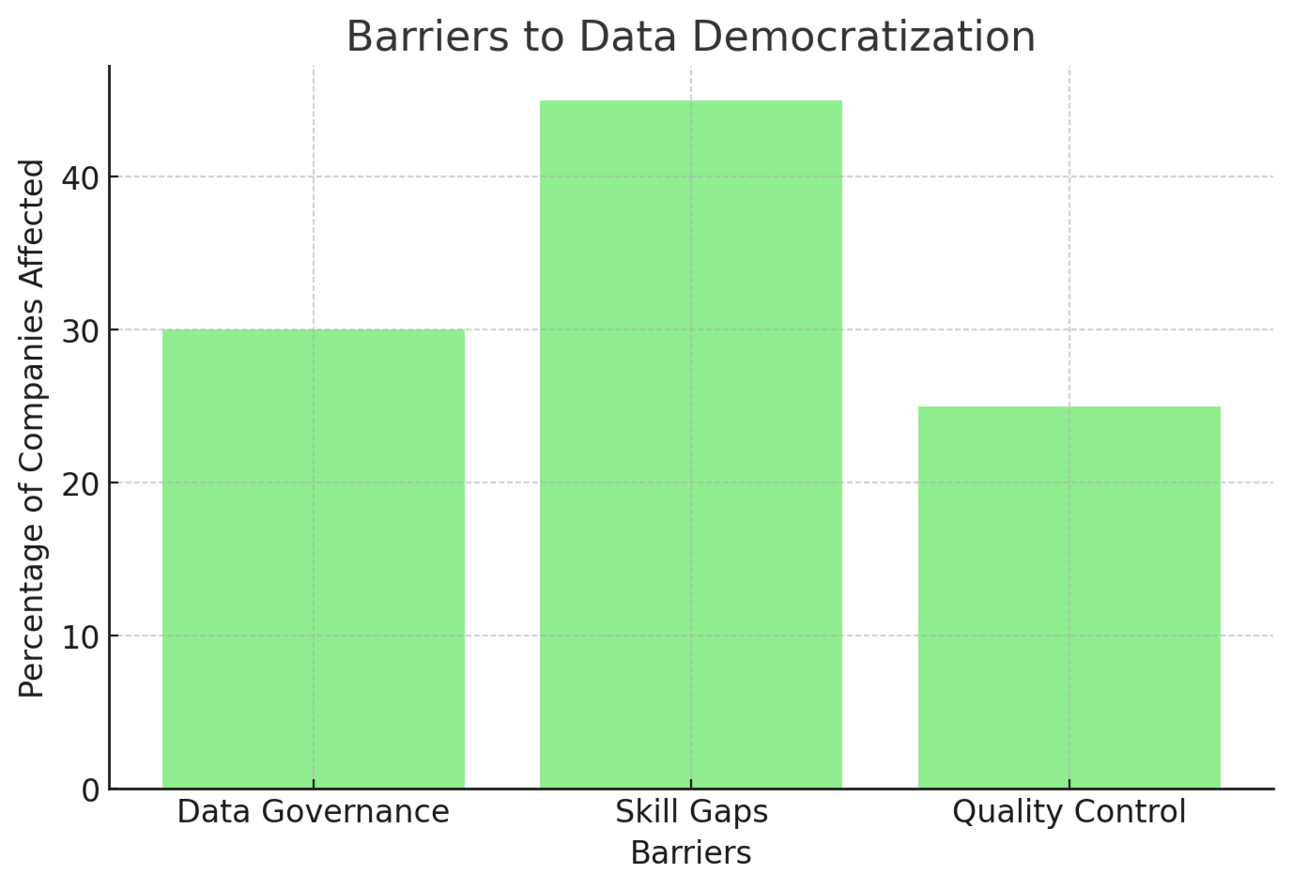- Growth Elements
- Posts
- How Data Democratization Is Transforming Decision-Making in SaaS
How Data Democratization Is Transforming Decision-Making in SaaS
Read time: 4 minutes.
Welcome to the 94th edition of The Growth Elements Newsletter. Every Monday and sometimes on Thursday, I write an essay on growth metrics & experiments and business case studies.
Today’s piece is for 7,000+ founders, operators, and leaders from businesses such as Shopify, Google, Sage, Hubspot, Zoho, RateGain, Zaggle, Servcorp, and Apollo.
Today’s The Growth Elements is brought to you by:
Modernize Out Of Home with AdQuick
AdQuick unlocks the benefits of Out Of Home (OOH) advertising in a way no one else has. Approaching the problem with eyes to performance, created for marketers and creatives with the engineering excellence you’ve come to expect for the internet.
You can learn more at www.AdQuick.com
Thank you for supporting our sponsors, who keep this newsletter free.
Data democratisation is no longer just a buzzword; it’s a fundamental shift transforming how companies operate and scale.
Data democratisation is reshaping the decision-making process by breaking down barriers to access, empowering cross-functional teams, and aligning organisations around actionable insights.
Let’s dive into how SaaS companies leverage this trend and explore actionable steps for CXOs and operators who haven’t yet realised its full potential.
What Is Data Democratisation in SaaS?
Data democratisation ensures that every team member - not just the data analyst, has access to critical data to make informed decisions.
This process enables:
Non-technical teams to run queries, analyse trends, and make data-backed decisions without relying on specialised teams.
Cross-department collaboration using a unified source of truth, ensuring alignment on metrics and goals.
Platforms like Looker, Snowflake, and Tableau have made it possible for marketers, product teams, and sales reps to unlock insights that were previously buried in technical silos.
Why It Matters for SaaS Companies
[1] Faster, Smarter Decisions
Democratised data eliminates bottlenecks from centralised analytics teams.
Real-time dashboards empower teams to react instantly to market shifts, customer behaviour, and operational challenges.

This line graph shows how decision-making speed improves as organisations move from pre-democratisation to full adoption.
[2] Enhanced Collaboration
Accessible data reduces organisational silos.
Enabling departments like marketing, product, and customer success to share insights, test hypotheses, and execute strategies cohesively.
[3] Better Customer Retention
By analysing customer behaviour and usage data, teams can create personalised solutions, improving customer satisfaction and retention rates.
Example:
HubSpot democratises customer data across teams, allowing:
Sales to put up personalised pitches in no to little time.
Support to rectify issues and error codes.
Marketing to refine behavioural messaging.
All this is leading to a 30% boost in engagement.
How CXOs and Operators Can Leverage Data Democratisation
[1] Shift from Gut-Driven to Data-Driven Decisions
Operators and CXOs often rely on experience and intuition for strategic decisions.
With democratised data, they can supplement their instincts with data-driven insights to:
Prioritise product features based on usage patterns.
Identify customer segments with the highest upsell potential.
Predict churn and mitigate risks proactively.
[3] Build a Unified Data Strategy
If you don’t have a cohesive data strategy yet, now is the time.
Here’s a roadmap:
Start with a single source of truth: Implement a centralised data platform like Snowflake.
Enable self-service analytics: Equip your teams with tools like Power BI or Amplitude to reduce reliance on data analysts.
Prioritise data literacy: Invest in training to ensure teams can interpret and act on data effectively.
[3] Leverage Predictive Analytics
By incorporating predictive tools like DataRobot or Tableau, CXOs can model future scenarios, whether it is:
Forecasting ARR growth
Optimising acquisition channels
Identifying operational inefficiencies.
[4] Align Metrics Across the Board
Data democratisation allows operators to ensure that every team works toward the same KPIs.
Transparency in metrics boosts accountability and drives aligned execution across departments.
Challenges to Address
Even with the best tools, democratising data comes with hurdles:
Data Governance: Establish policies for data privacy and compliance (think GDPR, CCPA).
Quality Control: Ensure data accuracy to avoid incorrect conclusions.
Upskilling: Train teams to effectively use analytics tools and interpret results.

This chart highlights the key challenges companies face while adopting data democratisation.
Looking Ahead: The Next Step in Data Democratization
The future of data democratisation lies in augmented analytics, where AI simplifies complex analysis.
By 2030, Gartner predicts that 80% of data tools will incorporate conversational AI, enabling operators to query data as naturally as they would ask a colleague.
Imagine asking, “Which customer segment has the highest CLV?” and receiving instant, actionable insights.
Final Words
Data democratisation isn’t just about giving teams access to data; it’s about creating a culture where insights, not intuition, drive decisions.
For CXOs and operators, this shift isn’t just an opportunity, it’s a necessity.
That's it for today's article! I hope you found this essay insightful.
Wishing you a productive week ahead!
I always appreciate you reading.
Thanks,
Chintankumar Maisuria
Stop wasting precious ad dollars on underperforming visuals
Winning in paid advertising isn't just about hard work, it's about smart creative automation.
With Creatopy, you can build, scale, and deliver high-performing ads that help you prove ROI and be a better marketer.
And the best part? Creatopy's AI helps you create and deliver ads in seconds.
Companies like Nestle, Nascar, Amazon, Salesforce, Decathlon or zipcar already rely on Creatopy to create high-performing ads and improve their ROI.


